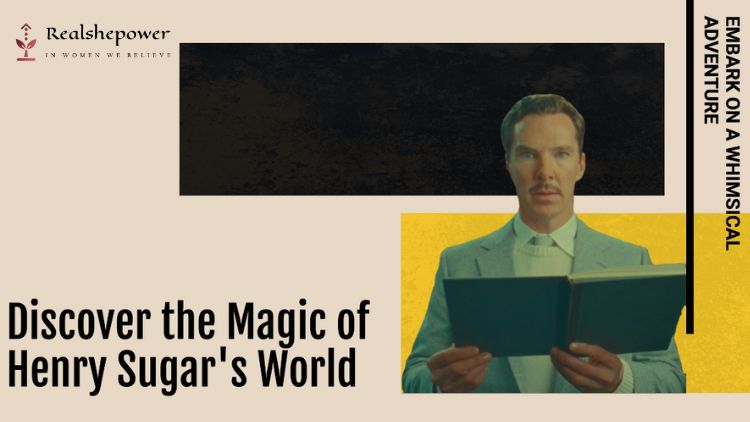A Journey into the Whimsical World of Henry Sugar


Every so often, a film graces our screens that encapsulates the epitome of artistry and storytelling, a film that, despite its brevity, leaves an indelible imprint on our souls. This year, that film is Wes Anderson’s “The Wonderful Story of Henry Sugar,” a creation that is as whimsical as it is profound, and as concise as it is expansive.
In a mere 39 minutes, Anderson weaves a tale of staggering beauty and complexity. It’s akin to stepping into an intricately illustrated children’s storybook, where every turn of the page reveals a myriad of colors, complex characters, and evocative imagery. Borrowing from Roald Dahl’s timeless 1977 short story, Anderson has orchestrated a cinematic piece that captivates, inspires, and transcends the typical narrative experience.
As one delves into the illustrious life of Henry, portrayed with veritable intensity by Benedict Cumberbatch, there’s an immediate plunge into a world teetering between excess and ennui. Henry is a man draped in affluence yet void of substantive meaning, a theme that resonates in the enigmatic environs Anderson is celebrated for creating.
The introduction of Imdad Khan (Ben Kingsley) catalyses a metamorphosis in both Henry and the narrative pace. Kingsley’s portrayal is hauntingly evocative; he lends soul to a character shrouded in mystique, painting Imdad with strokes of vulnerability and potency. The narrative veers into an exploration of the extraordinary, morphing from an aesthetic wonder into a philosophically charged odyssey.
There’s a juxtaposition that’s achingly beautiful, where the visual grandeur amplifies the internal turmoil and eventual evolution of Henry. His pursuit of the mystical skills of seeing without eyes becomes an allegorical journey. Each frame, akin to a whimsical yet meticulously crafted painting, reflects the tumultuous waters of his soul, echoing his oscillation between skepticism and belief, superficiality and depth.
Anderson employs his signature narrative structure, reminiscent of his previous works yet distinctly innovative in delivery. The characters are woven into a dance, each step a synchronised revelation of their intricate dimensions. The rapid dialogue, the whirlwind of events, it’s a euphoric chaos that somehow, amidst the complexities, unravels a theme of poignancy and introspective revelation.
The cinematography is as compelling as the narrative. Each scene is a testament to Anderson’s unparalleled ability to merge visual splendor with thematic depth. He crafts a world where boundaries between the illusory and tangible blur, where colours, sounds, and movements resonate with the unuttered emotions and unexplored terrains of the soul.
“The Wonderful Story of Henry Sugar” transcends its runtime. In its 39 minutes, it navigates a journey from the superficial gleam of affluence to the profound depths of existential exploration. The characters are as vibrant as the visual tapestry, with each movement, every dialogue echoing the internal revolution of the soul. In this succinct yet expansive narrative, Anderson proffers a film that is not just seen but profoundly felt.
It’s a magnum opus of lyrical storytelling, where whimsy and depth converge, and where each frame is not merely a visual spectacle but a soul-stirring narrative echoing the eternal dance between the tangible and ethereal. Amidst the cinematic grandeur and narrative ingenuity, “The Wonderful Story of Henry Sugar” lingers, not just as a film but as a poignant journey of the soul from the superficial lights to the profound, illuminating depths of self-discovery.
Also Read:
- Air: The Fascinating Story of Michael Jordan and Nike’s Iconic Partnership
- How CODA Pulls All Our Emotional Chords, One Scene At A Time
